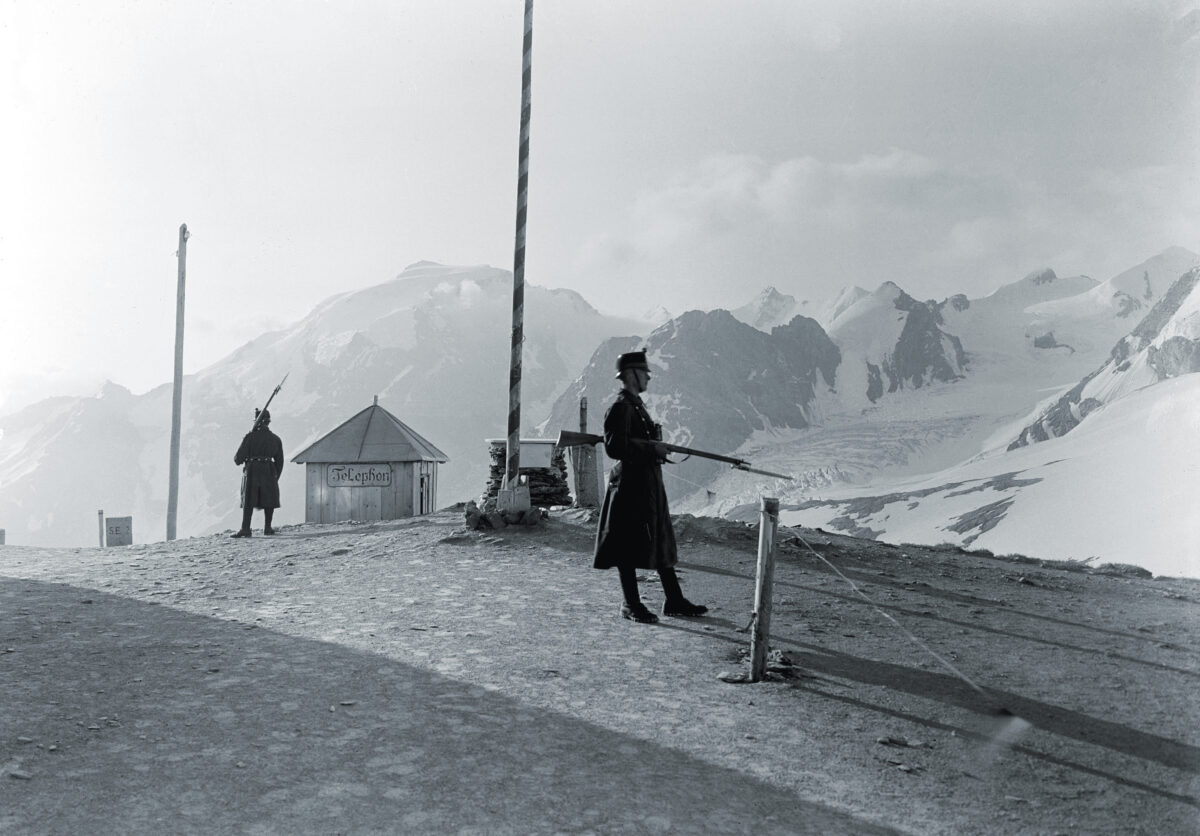Switzerland was neutral in the First World War, and almost entirely untouched by the warring parties. High at the top of the Alps, though, Switzerland suffered its only war casualty: 23-year-old Fusilier Georg Matheu Cathomas.
While Germans did trespass through Switzerland countless times on their way to France, they largely left the isolationist mountain nation alone. Instead, it was the opposite border, in the southeast, that presented the worst problems. The White War between Italy and Austria-Hungary was fought in the alpine region of Tyrol. There, a tiny sliver of Swiss territory abutted the Italian and Austrian borders, above the Stelvio Pass.
Swiss territory ended above the pass, with a border post atop the Dreisprachenspitze (“Three Languages Peak,” pictured here). The mountain’s name describes the surrounding area, with Austria’s German speakers, Italy’s Italian speakers, and Switzerland’s Romansh speakers, the oft-forgotten fourth official language of Switzerland.
Italian and Austro-Hungarian officials agreed to only fire down into the pass, not up toward the mountain. On Oct. 4, 1916, though, tensions between the lines boiled over. The Austro-Hungarian troops had raised a number of flags from their mountain peaks, across the Swiss border, in celebration of the Emperor’s name day. In response, a group of Italian troops fired a volley over the border toward the Austro-Hungarian flags in anger, but a handful of bullets went wide, and one hit Cathomas, passing through his arm and chest.
Cathomas, a veterinary student, was buried with full honors at the Sogn Gion Cemetery in his hometown of Domat. His widowed mother received compensation from the Swiss and the Italian governments.
historynet magazines
Our 9 best-selling history titles feature in-depth storytelling and iconic imagery to engage and inform on the people, the wars, and the events that shaped America and the world.


